As we approach the second anniversary of novelist Norman Mailer’s death, there appear more and more articles assessing his work over a lifetime. The reviewers tend inevitably to focus on his scandalous behavior and outrageous statements from 1955 onward. They mention only in passing, usually without comment, that Mailer was a socialist once, in his own words, following “a far-flung mutation of Trotskyism.” Mailer’s adventure on the left is most prominent in his second novel, Barbary Shore (1951), but it is also found in his early essays, and serves as the necessary background for the outrageous Mailer of later years.
 Norman Mailer
Norman MailerAfter attaining sudden fame with The Naked and the Dead (1948), Mailer was never in public alone, it seemed. Introduced by a very significant influence, Jean Malaquais, Mailer fell in after the war with a crowd known even then as the “New York Intellectuals.” Though drawn to the ideas of Leon Trotsky in depression and war, these prominent intellectuals felt their ardor cool when opportunities beckoned in postwar academic life, in the unions and as expert advisers to the government on the evils of communism. It was a very cosmopolitan crowd much strengthened by an influx of Europe’s leading intellectuals fleeing Hitler, not a few among them, like Malaquais, associated with strong personalities and of the type Lenin had in mind when writing Left-Wing Communism: an Infantile Disorder. People change, or at least stand more revealed in time, the poet Charles Olson reminds us.
There was frustration and bewilderment on the anti-Stalinist left after the war as the Stalinist parties saw a mass influx of members in Europe and Asia. Meanwhile, the American government in a period of prosperity started to drive Communists and fellow travelers out of the labor movement, academic life and Hollywood. Indeed, Mailer was working with Jean Malaquais in Hollywood, attempting without success to become a screenwriter in 1949-50, when so many talented people were turned into “un-Americans” and made the subject of investigation and harassment by congressional committees, the FBI and the media.
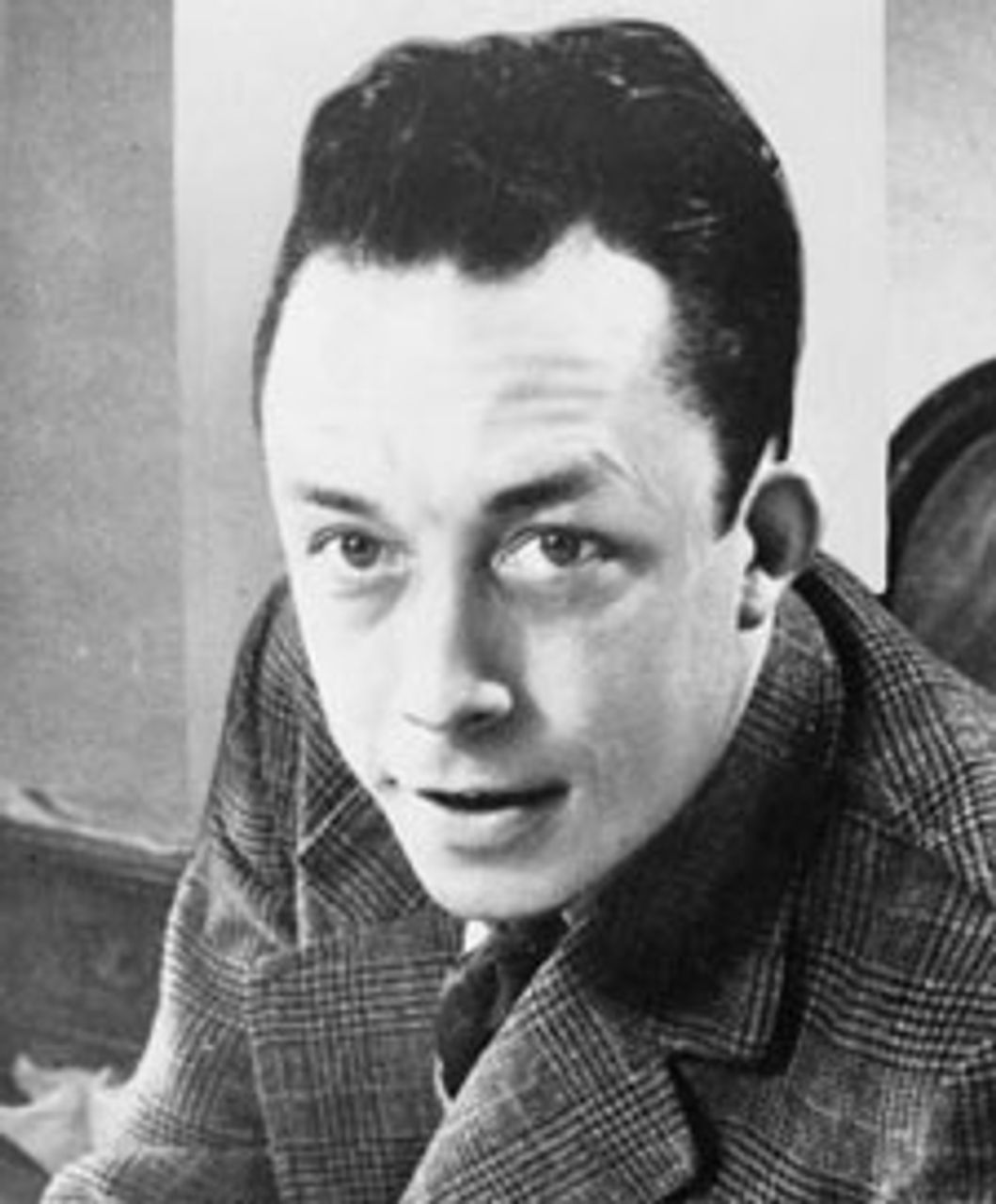 Albert Camus
Albert CamusMalaquais was introduced to Mailer in 1947 before the publication of Mailer’s first novel, which Malaquais translated into French. Mailer went to Paris with his first wife, Bea, to study literature at the Sorbonne on the GI bill in a heady period in French cultural life, the Liberation. This was the source of a chic, Left Bank existentialism in much of Mailer’s writing, the living dangerously and creating-yourself-all-by-yourself ethos. At the time, Jean-Paul Sartre and Albert Camus tutored the young at the Café Flore on authenticity, commitment and rebellion as an affair best carried out alone and in dramatic political gestures. Camus, by the way, stayed at Malaquais’ New York apartment on an extended visit in 1946, and was a familiar figure in the bars and cafes of the Montmartre with his Rick’s Place (Casablanca) outfit and Resistance aura. Malaquais must have cut a similar figure. From him, young Mailer was exposed to the intellectual trends of post-war Europe of which Malaquais had first-hand knowledge.
“A Great New Writer” Trotsky commented upon reading Malaquais’ first novel The Javanese (1939) at an inauspicious time, for Hitler’s pact with Stalin combined with the failure of the Popular Front alliance of left and bourgeois parties was about to give Germany a quick victory over France. Not given to easy praise, Trotsky compares Malaquais favorably with Maxim Gorky in his affirmation of life and contrasts Malaquais’ love of his characters for their resiliency and resourcefulness over Louis-Ferdinand Céline’s revulsion at the poor and André Maurois’ dandy-like distance from them. While attentively studying the main characters of the novel, Trotsky showed special appreciation for the fact that its sophisticated formal structure allowed its working-class heroes to emerge without the lyrical or dogmatic presence of the author.
Trotsky had, in fact, no idea of Malaquais’ nationality or political views. He corresponded with Malaquais and found that the author of the startling first novel was a Polish Jew named Wladimir Malacki, a sans papier (without a visa), like so many in France today, yet taken into its army as a soldier. Malacki received the happy news at the front that under the pen name of Jean Malaquais his then recently published autobiographical first novel was awarded the distinguished Prix Renaudot. “It is well that there is art in the world as well as politics. It is well that the potentialities of art are as inexhaustible as life itself,” Trotsky wrote wonderfully in appreciation.
Though he did not pontificate in literature as Mailer would come to do, Malaquais was not naïve about politics. He came into contact with the Trotskyist Communist League led by Albert Rosmer and Pierre Naville in the thirties, but chose to follow a close friend and life-long political associate, Marc Chirik, to affiliate with one of the many factions that sided with Trotsky in his struggle against Stalin, and kept their distance from him after, this one led by a former leader of the Italian Communist party named Amadeo Bordiga (a terrible ultra-left sectarian). Malaquais fought in the Bordiga column in the ill-fated POUM of the Spanish Civil War. The Stalinist destruction of the POUM and the murder of its leader, Andres Nin, are some of the events recounted in George Orwell’s Homage to Catalonia (1938), a must-read to understand the period.
Then came the German blitzkrieg, concentration camp, and escape to Marseilles where the crème de la crème of Europe’s intellectuals lived in dread and came to regret their faith in the Popular Front and its illusions, most to emerge as different people under the weight of defeat. Having gotten out of Marseilles thanks to Varian Fry (who also brought out Max Ernst, Andre Masson, Wanda Landowska, Andre Breton, Andre Malraux and Marc Chagall), Malaquais made his way from Venezuela to Mexico where he had a famous quarrel with Victor Serge about Serge’s growing appreciation of bourgeois democracy and abandoning of the principles of revolutionary internationalism in a world war.
Unlike Serge, Malaquais made his way to the United States and was immediately drawn into New York political circles clustered around various journals that mixed culture and politics. The United States was very good to him and to many other leftists who found academic careers and tempered their Marxism accordingly. Malaquais was teaching literature after the war at the New School for Social Research in New York, where a great many of the leading figures of the European left found employment.
He was not in Paris to make revolution when he met Mailer, but rather to be on hand in case he received the Prix Goncourt for which he was nominated for Planet without a Visa (1947), his account of life in Marseilles among Europe’s leading intellectuals in desperate flight from Hitler. On their first meeting, Malaquais, who belonged to a leftist tendency which abhorred elections, scolded Mailer for his active participation in Henry Wallace’s short-lived Progressive Party.
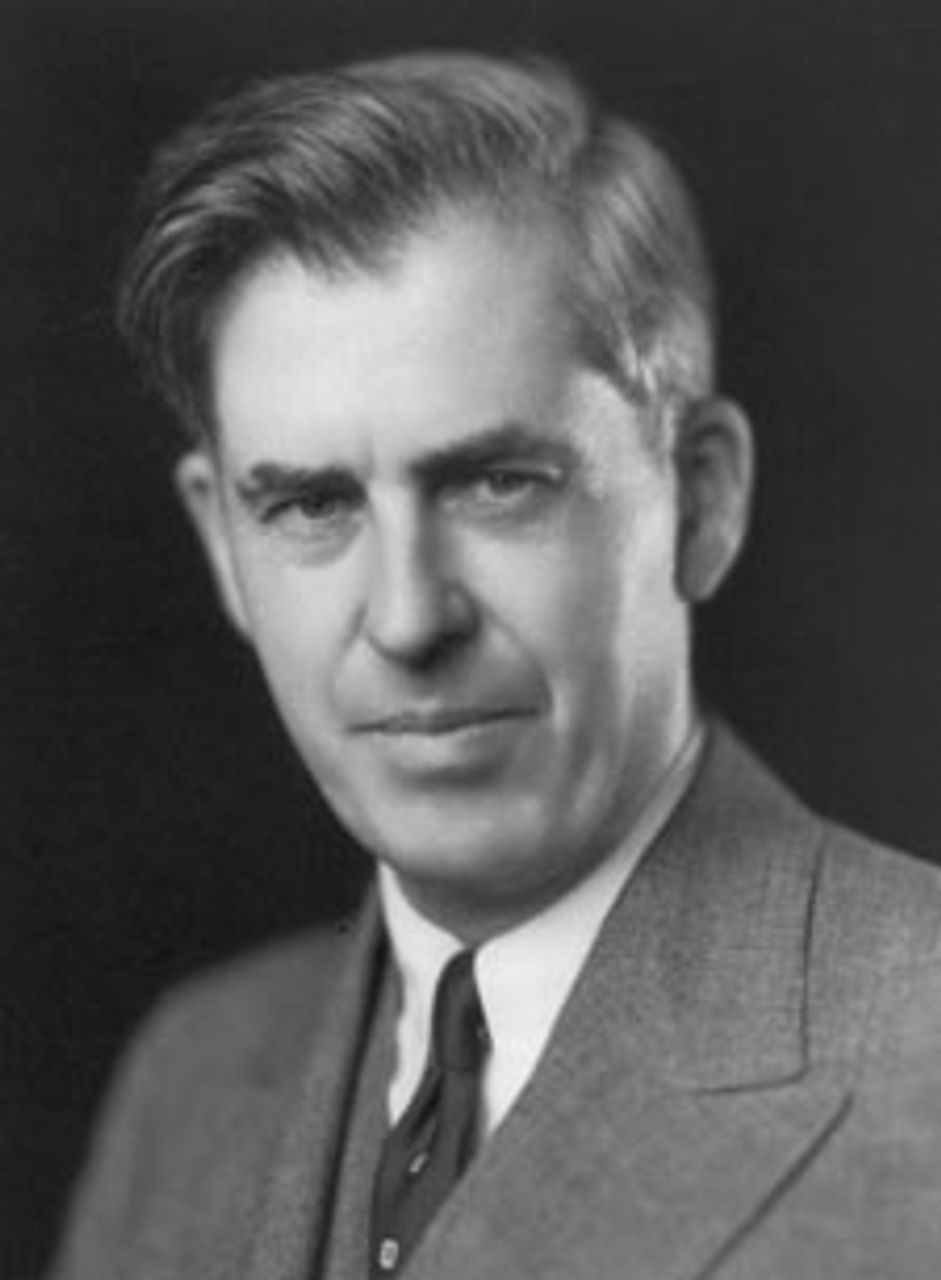 Henry Wallace
Henry WallaceA New Dealer and vice president during Roosevelt’s third administration, Henry Wallace was as sure as Stalin and the American Communist Party that the wartime alliance between the United States and the Soviet Union would continue when war ended. He was fired for opposing in 1946 the preparation for war against the Soviet Union and founded the Progressive Party, his presidential vehicle, to maintain New Deal illusions a bit longer. Wallace’s 1948 campaign for president was the last significant alliance the Stalinists formed with a section of liberals, before most of the latter either went silent or joined the right-wing in persecuting the CP and its supporters with a vengeance.
Wallace was enthusiastically promoted by the Stalinists as part of the emerging “peaceful coexistence” general line with its passive live-and-let-live attitude toward American imperialism which, by contrast, took a vicious attitude toward its opponents. This is best expressed by General Cummings in Mailer’s The Naked and the Dead: “After the war, our foreign policy is going to be far more naked, far less hypocritical than it has ever been. We’re no longer going to cover our eyes with our left hand while our right is extending an imperialist paw.” The novel became a huge best-seller, especially among ex-servicemen who saw in it the reality of army life, as the veterans of the earlier world war saw themselves in All Quiet on the Western Front (1929).
Mailer depicts in his first novel army life as a more concentrated and conscious expression of class oppression against which neither liberal nor socialist opposition can stand. Indeed, it was a time of retreat on the left after the Stalinists helped suppress the fires of revolution in post-war Europe. In France and Italy, the Communist parties first surrendered their armed resistance detachments on Stalin’s advice and, on the same basis, joined very briefly, before they were unceremoniously booted out, bourgeois governments that used the opportunity to put in place the very successful military and economic architecture of the Cold War.
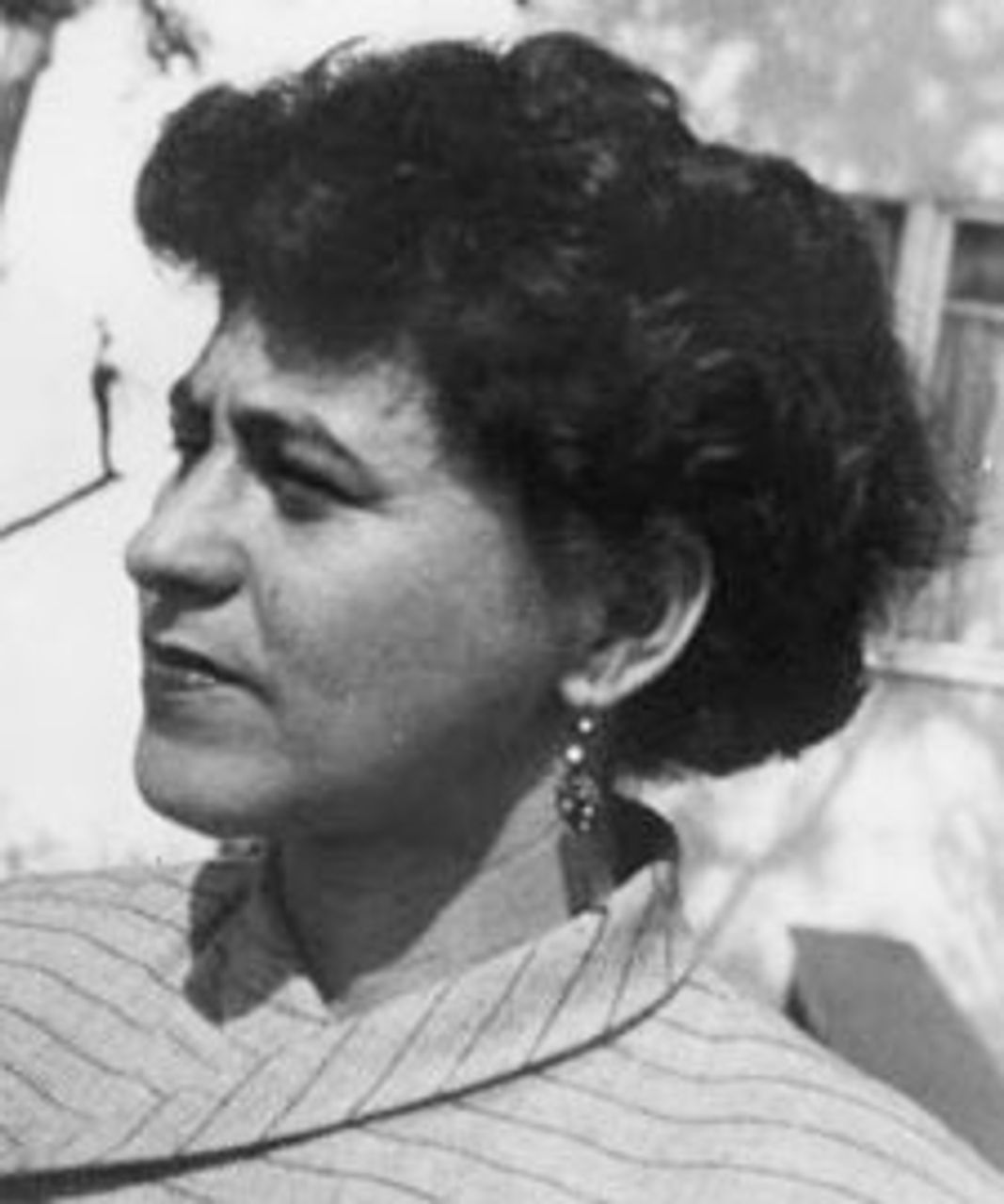 Raya Dunayevskaya
Raya DunayevskayaAmerica’s Stalinists, adhering to the twists and turns of Moscow’s line, were ready as ever to sell the Democratic administration their special skills in policing the labor movement and giving a progressive cover for sections of a capitalist class in crisis, but there were no buyers after the war. Instead, the Democrats, flush with economic power, were helping put in place the repressive mechanisms of the Cold War period, including the “un-American investigations” about which Mailer wrote in Barbary Shore (1951) and The Deer Park (1955). The former work is dedicated to Malaquais, and both show his influence vividly demonstrated in 1949 when the Stalinists and their allies hoped to set up a peace movement of progressives and invited Mailer to address the Waldorf Peace Conference, as it came to be called after the New York City hotel where it was held.
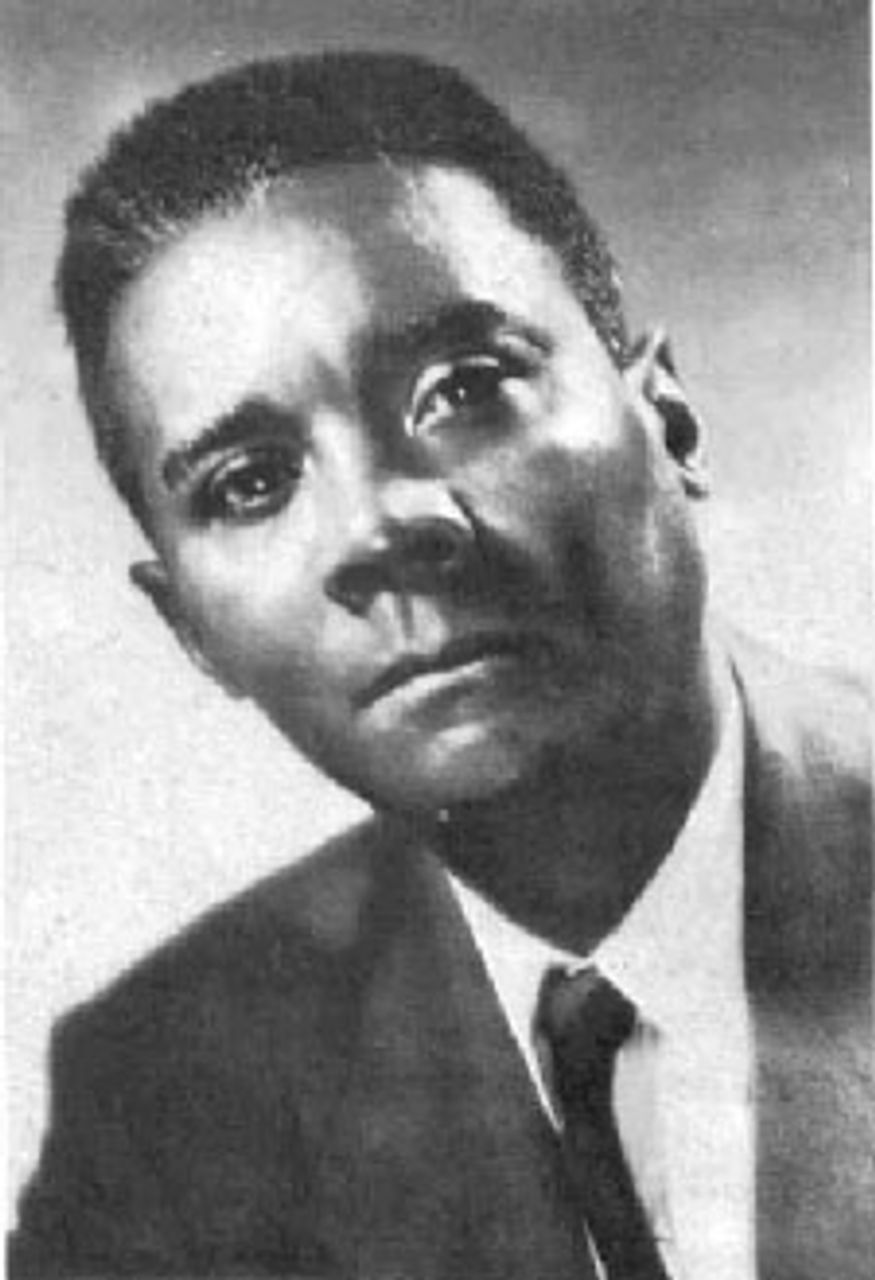 CLR James
CLR JamesMailer addressed crowds in New York and Los Angeles for Wallace’s doomed campaign of 1948, a “democratic fellow-traveler,” by his own description. Interestingly, a Hollywood committee in defense of threatened civil liberties led by Humphrey Bogart greeted and introduced him in Los Angeles, awakening Mailer’s interest in the issue in his next two novels. Now, a year later, Mailer rose at the Waldorf hotel to announce to the astonished gathering that war is inevitable despite their best efforts as long as two capitalistic super-powers faced each other; the first, the United States, disguised as a democracy, and the second, the Soviet Union, pretending to be communist, but in reality “state capitalist.” Mailer’s“ far-flung mutation of Trotskyism” is specifically derived from a faction in Max Shachtman’s Workers Party called the Johnson-Forest tendency, which attracted Malaquais, who maintained a life-long friendship with the principal leaders of this very unstable formation, soon to splinter again, C.L.R. James and Raya Dunayevskaya.
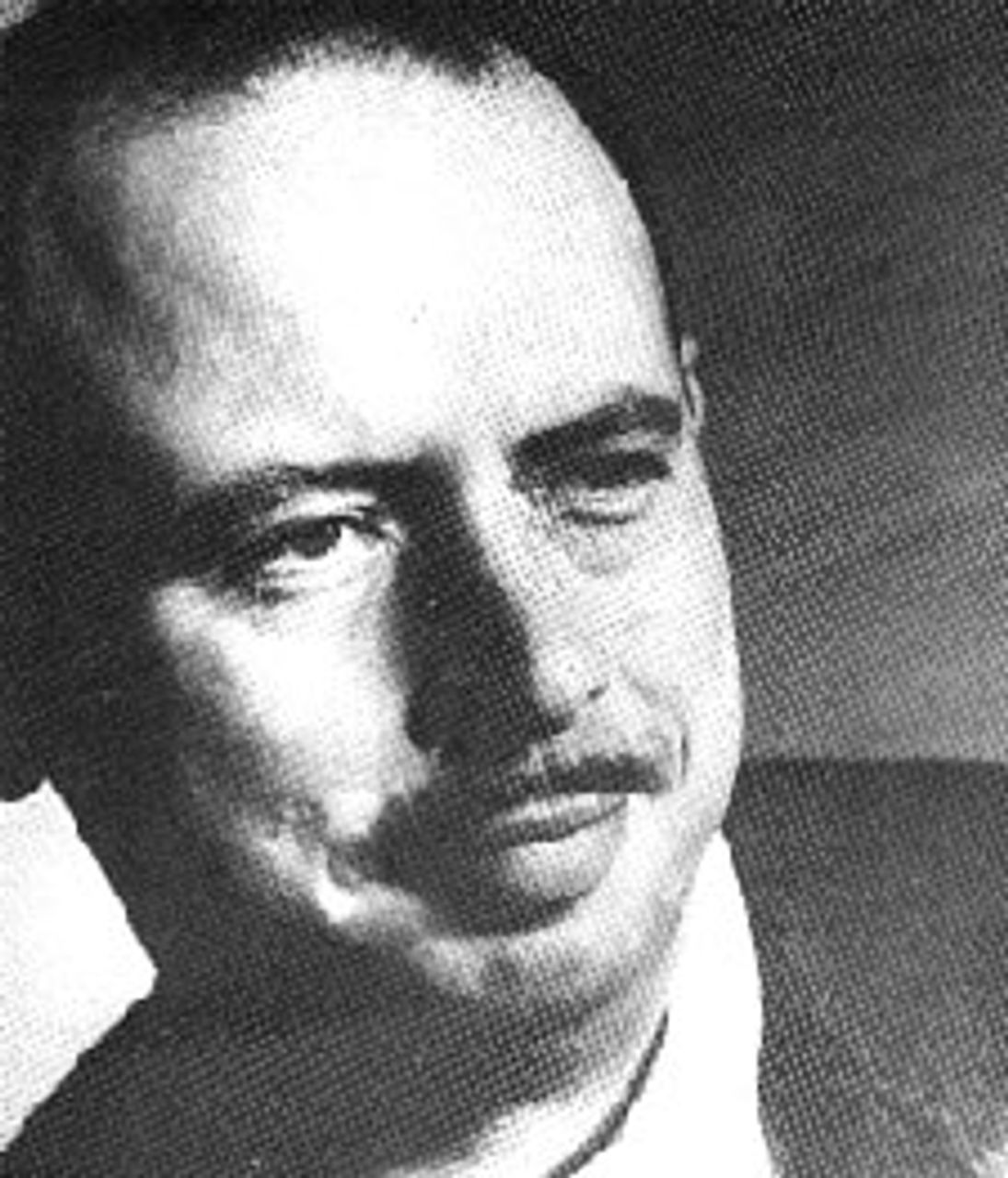 Max Shachtman
Max ShachtmanThe issue that then preoccupied Mailer’s associates, the New York Intellectuals, was the definition of the Soviet state. Many intellectuals who had once been followers of Leon Trotsky could simply not accept the formulation that the Soviet Union was a “degenerate workers state.” Some claimed, as Shachtman and his followers had, that it had become “bureaucratic collectivist.” There followed over the years an ever more demonic assessment, as the State Department and unions opened wide the door of opportunity to a section of the anti-Stalinist left on a long march ever more to the right. The faction Mailer supported named the Soviet Union “state capitalist” in which the Stalinist bureaucrats assumed the role of the capitalist class. This is what Mailer tries to convey in Barbary Shore over many dreary pages, and has a great deal to do with the realization after the war of the very sinister nature of Stalinism. It also has a great deal to do with political exhaustion among the New York Intellectuals clustered around progressive journals that became less progressive year by year.
Trahison des clercs, “A Treason of the Intellectuals,” James P. Cannon, leader of America’s Trotskyists, thundered in 1947 when all about him the intellectuals of the Depression era were leaving the battlefield for cushy positions in government, universities and unions, in Cannon’s uncompromising view, committing treason. Not one to mince words, Cannon asked “What happened to the numerically formidable aggregation of cogitators and problem-solvers who challenged capitalism to a showdown fight in the unforgotten ’30s and appeared to be all set to mount the barricades with fountain pens unsheathed?” Strong words follow: “They quit before the fight got really started. They took it on the lam. They deserted and betrayed,” with an obvious explanation of its cause: “At the present time American monopoly capitalism gives the appearance of invincible power. That is what determines the current predilection of the petty-bourgeois class to side with the monopolists against the workers.”
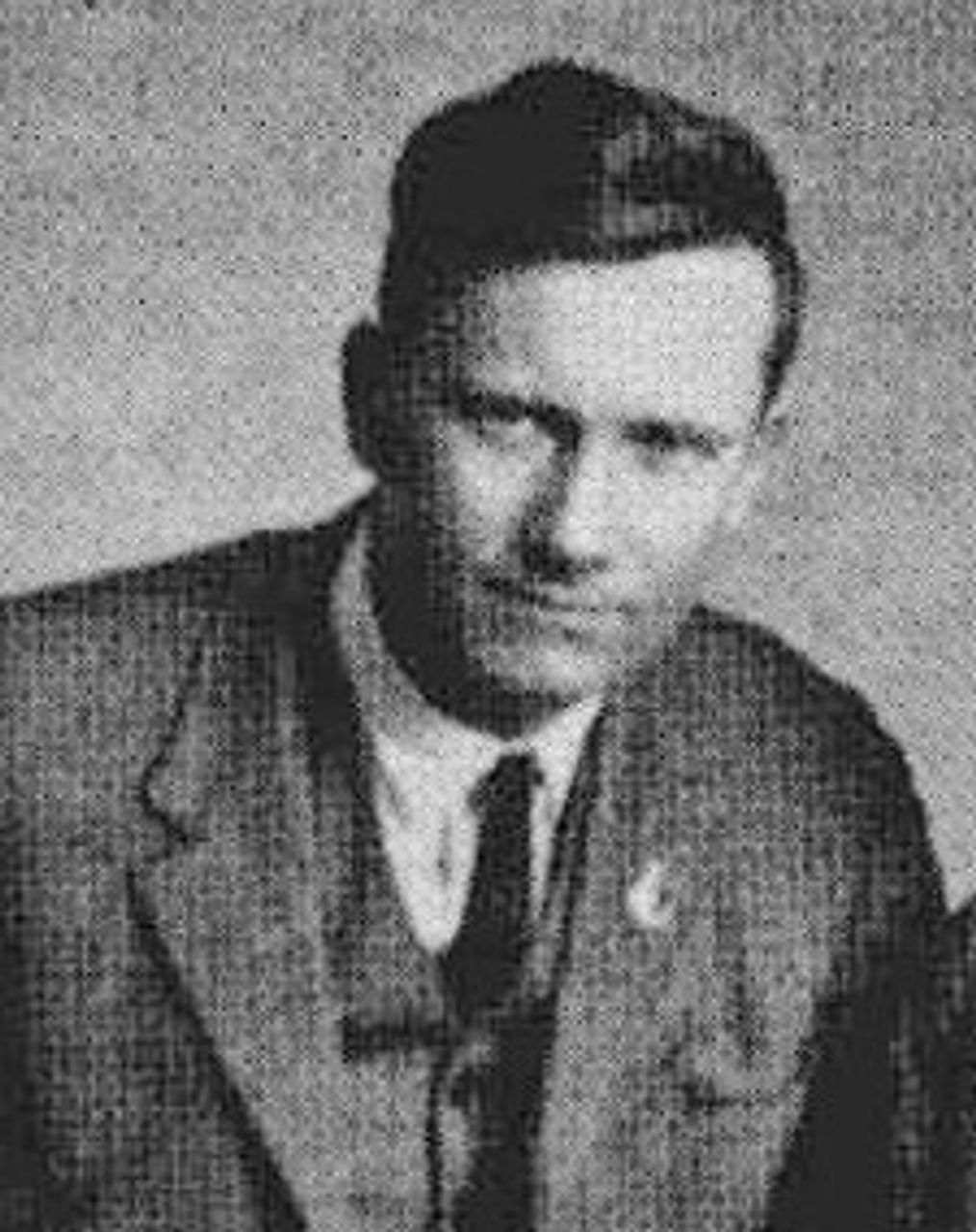 James P. Cannon
James P. CannonBarbary Shore takes place at this time in a boarding house as closed-in and airless as the “socialism” that is proclaimed in the novel. William McLeod carried out shameful tasks as a Stalinist agent in Spain and helped to organize the murder of Leon Trotsky. He is pursued and interrogated at length by an FBI agent under cover, a kind of bureaucrat at a time when a prominent leftist tendency proclaimed that administrators constitute a new class to rule the earth. The secret agent does not know that McLeod’s lover, the red-haired, earthy and flamboyant landlady, Beverly Guinevere, is actually McLeod’s wife. She seems to represent the proletariat from whom the revolutionary became estranged. Present at the interrogation over “a little box” in McLeod’s possession are Lannie Madison and Michael Lovett, the narrator and eventually a disciple of McLeod. Lannie has become deranged after unwittingly introducing Trotsky to his axe-wielding murderer, while Lovett is an amnesiac, and thereby tabula rasa for McLeod to rework. “I find politics among the most pathetic,” McLeod tells us, and these surely are.
Pursued and eventually murdered by the secret agent, McLeod leaves Lovett the pitiful remnants, the “poor hope” he calls it, of the revolutionary passion of his youth, which may be the small package he is hiding. It seems funny now in our era of heart-breaking human suffering from a collapsing economy to read a vision of socialist future as a successful Freudian analysis: “You might say the human function of socialism…is to raise mankind to a higher level of suffering for given the hypothesis that man has certain tragic contradictions the alternative is between a hungry belly and a hungry heart but fulfillment there is never.” In a similar vein, James T. Farrell whose brilliant trilogy, Studs Lonigan (1935), lay on Mailer’s desk while he was writing The Naked and the Dead, turned from strong support of Trotsky, he explains in “Reflection on Turning Fifty,” to a stoical acceptance of the inevitability of human suffering, regardless of the political system: “I have come to see that pain and agony are part of the way it is in life.” Get used to it.
What there is of narrative in Mailer’s Barbary Shore is simply a means of setting up a teaching session in which the world is depicted as one of endless wars. Often cited as “Trotskyist,” it would be well to compare the novel’s last lines with Trotsky’s “Testament.” This is where MacLeod’s teaching leaves Lovett: “The storm approaches its thunderhead, and it is apparent that the boat drifts ever closer to shore. So the blind will lead the blind, and the deaf shout warning to one another until their voices are lost.” Now, these are the last beautiful lines from Trotsky’s pen. Having called attention to his wife, Natasha, opening the window to let fresh air in, he looks out and writes, “Life is beautiful. Let the future generations cleanse it of all evil, oppression, and violence, and enjoy it to the full.”
Mailer was hardly alone in his outlook. At the same time existentialism, mysticism, psychoanalysis and similar ways of thinking grew more popular as political hopes dimmed, just as it happened among intellectuals in Russia after the failure of the revolution of 1905. It sounds very silly now but in a 1953 essay “David Reisman Reconsidered” that Mailer published in Dissent, one of the many journals of what passed for radical thought at the time, Mailer proposed that the working class needs socialism because, in the absence of artistic creativity, workers need to work on themselves, apparently as therapy to achieve what in Maslow’s humanistic psychology is called “self-actualization.” He takes up sympathetically the defense of the homosexual in “The Homosexual Villain” (1954), which was daring for the time, but actually follows similar articles on the left by poets Parker Tyler and Robert Duncan.
When the civil rights movement was heating up, Mailer came out in Dissent with the shocking “The White Negro: Superficial Reflection on the Hipster” (1957). The concentration camp and the atomic bomb may have other implications, but Mailer experiences these horrors uniquely as a threat to the already enfeebled personality of man in the Twentieth Century. Enter the psychopath, savior of bourgeois men feeling bad about themselves, the “American existentialist,” or “rebel without a cause” as he was called by a friend and great influence on Mailer, the psychoanalyst Dr. Robert Lindner, who sold the title and the theme to the movies.
Mailer takes it too far, but such was a time in the fifties when sensational novels, films and sociological studies poured out on juvenile delinquents, homosexuals, drug addicts and con artists. It was a time of prosperity when both the American economy and the self-confidence of its ruling class grew. There was little fear in the petty bourgeoisie of unemployment, eviction and homelessness as now, but rather of turning into one of “the lonely crowd,” “the organization man,” “the man in a grey flannel suit,” etc. It was boring to be middle-class, as generation after generation discover from Madame Bovary onward. Norman Mailer thought he found a way out among rapists and murderers.
The author who writes elsewhere of “the artistry” in rape, cites in this essay the murder of a poor candy store owner by two youngsters as a revolutionary act, “for one murders not only a weak 50 year old man but an institution as well, one violates private property….” This is twisted ethics, in his own words “a morality of the bottom” found in “perversion, pimpery, drug addiction, rape, razor slash, bottle-break, what-have-you,” all of which is therapy making the unconscious conscious, for instance resolving Oedipal conflicts by committing incest. It was intended to shock, but the basic idea was hardly new. One recalls “The Revolutionary Catechism,” which long ago the psychopath Nechayev got the impressionable Bakunin to sign up on. It reappeared in postwar radical politics and would soon be a disturbing and dangerous feature as one saw in Eldridge and Catherine Cleaver, Imamu Baraka nee Leroi Jones, and all the “off the pig” thinkers in various political currents.
While Malaquais disapproved of “The White Negro,” he too was walking an existentialist path, though in a more gentle way, gaining his doctorate in the Sorbonne on the philosopher of religious anguish, Kierkegaard, on which he was working through the 1968 events in France where he appeared as advisor to young anarchists. Predictably, the vision of a socialist future becomes clouded thereby, as we find among his associates. Herbert Marcuse, among Malaquais’ closest friends, looked around a prosperous and self-confident America and improved upon the seemingly dated Marxist theory of surplus-value extorted from the proletariat to invent “surplus-repression,” by which the capitalist state represses sexual desire in order to facilitate control over the population and narrow the human potential to the “one dimensional man.” Since then, the sexual revolution came and went without alienation overcome or the capitalist class shaken. Raya Dunayevskaya advocated a “humanistic” Marxism aimed at a higher cultural development of human beings and the liberation of women. C.L.R. James became a passionate representative of black liberation movements and a follower of the poet of “Négritude” and leader of Senegal, Leopold Senghor.
Invited to provide a critique of Mailer’s “White Negro,” Malaquais understood why his friend Norman turned, like Bakunin before him, to the revolutionary potential of psychopaths, hustlers, murderers, thieves and such—a loss of faith in the working class. The term “lumpenproletariat” Malaquais applies to Mailer’s new heroes comes from Karl Marx who noted in The Eighteenth Brumaire of Louis Napoleon and elsewhere how a portion of this class of marginal types in times much like ours rises to power as a financial aristocracy that thrives “when money, filth and blood commingle” as they had in Mailer’s life and in his art and, for that matter, everywhere about us.
From here on, Mailer’s interests were the powerful, not the wretched of the earth, for, as he explains in An American Dream (1965), “God and the Devil are very attentive to people at the summit. I don't know if they stir much in the average man’s daily stew….” All this comes from a Persian religious teacher the medievals knew as Mani the Manichee, whose heresy has arisen from time to time in slightly different forms. It is a dualistic theology in which God and the Devil are evenly matched and locked in battle. God is not all-powerful, Mailer often, too often, explained, and may lose the battle over the souls of man and rule over the earth unless Norman and like-minded others intervene on his side. Mailer tells of God’s ways to men by which God and the Devil duke it out over the “great man” worthy of the attention of divinities, not you and I, but celebrities—Picasso, Hitler, Lee Harvey Oswald, Marilyn Monroe, Muhammad Ali, George W. Bush, the Astronauts and Jesus Christ, Son of God, whose biography Jesus writes with Norman’s help in The Gospel According to the Son (1999).
Beginning with an essay on Kennedy running for President, “Superman Comes to the Supermarket” (1960), Mailer joined in this way dead-end political currents of the late fifties and sixties that emphasized the psychologically liberating quality of blood-curdling violence, identity politics, revolution as performance art, resistance through pharmaceuticals or through Hindu chants and assorted mystical practices. By the seventies, still thinking, or at least maintaining the pose that they represented radical, progressive thought, many activists in this tradition became like Mailer, servants and clowns of that financial aristocracy whose bestiality, delusions of grandeur and plain stupidity is so well suited to Mailer’s late work.
It’s not entirely clear where Mailer’s sympathies lie already in The Deer Park (1955), which contrasts the process by which a director, Francis Eitel, loosely based on Elia Kazan, testifies before the House Un-American Activities Committee, disappointing thereby his disciple, Sergius O’ Shaughnessy, and ruining his own artistic and sexual life in the process. The young narrator, a war hero, decides not to sell out to Hollywood, but at the end, the real hero turns out to be Marion Faye, a millionaire pimp, who uses his homosexuality, shocking for the times, and the magic of perversion as a source of spiritual growth and political resistance. Indeed, Sergius O’Shaughnessy appears again in a short story “A Time of Her Time” (1959) as a teacher in Greenwich Village, of all things, bullfighting. A one-man sexual revolution, he manages after many pages to bring a previously frigid woman to orgasm by paths not previously tried.
By that point, Mailer was butting heads, biting ears and in general going nuts, in his life as well as in his art. There was, for instance, the famous incident when he knifed and nearly killed his second wife, Adele Morales, who seemed to have a taste for men on the verge of adulthood, having been briefly married to Jack Kerouac, who completed the original version of On the Road (1956) in her apartment before returning to his true and abiding love, his mother. Then there is the climax of Mailer’s film, Maidstone, when playing the president of the United States, he tries but fails to get assassinated, at least until the not very edifying scene, easily found on YouTube, when Rip Torn bashes Mailer’s head with a hammer and the president attempts to bite off the ear of one of his cabinet members. (While in YouTube, you shouldn’t miss Ryan O’Neal delivering what is deservedly labeled the worst lines ever in screenwriting history from Tough Guys Don’t Dance (1987): “O God! O Man!” O Norman!)
Just one more example: in An American Dream (1965), also made into a film, the main protagonist in the first-person narrative is Stephen Rojack, war hero, ex-congressman, now a professor of existentialist psychology, clearly one of the elect, who shows us how the lumpen became the corrupt and decadent financial aristocracy that rules our lives. “I met Jack Kennedy in November, 1946,” he begins. “We went out on a double date and it turned out to be a fair evening for me. I seduced a girl who would have been bored by a diamond as big as the Ritz.” Now married to an heiress to a fortune that he parlayed into a seat in Congress and later a talk-show, he responds to her infidelity, belittling and loss of income (he is broke), by strangling her and throwing her body off the balcony for “Murder offers a vast relief,” don’t you know.
It seems to have been sexually therapeutic as well, for between the strangling and the heaving, Rojack spies through an open door his wife’s German maid masturbating. Ruta is a spy, a Nazi, and seemingly very well acquainted, as are all his characters, with the Manichean heresy. They engage in a theological discussion, intended to shock the reader, but banal in its actual intellectual content, about God, the Devil and sexual practices of all kinds. After sex with Ruta, Rojack dangles himself off a parapet giving the contesting divinities of good and evil a chance to fight it out over him. In the event, God joins Satan in keeping Rojack alive for all kinds of silly wickedness through many dreadful chapters, including when the White Negro has it out over a woman, a southern white night club singer, of course, who is won in a wrestling match with a marijuana-toking black entertainer who took jive lessons it seems while Mailer was in Hebrew School. Hipster and hipster go mano y mano—and the white guy wins by going bad, again, and yet again.
At the end of his days Mailer could be found musing aloud on how 9/11 is what happens to bad architecture and how George W. Bush was the white man’s revenge for woman’s liberation and black emancipation. He is in one book the voice of a demon advisor to young Hitler, and in another a charioteer in ancient Egypt rising to the top by sex with Nefertiti and the pharaoh. Nor could he spare his readers descriptions of lions eating testicles and scenes of mass-rape.
And yet people, even those he assaulted, testify that Norman Mailer was a very nice man in person. So how does a good Jewish boy from Brooklyn who went to shul and loved his mother, a mensch, become the author of this twisted stuff? Without apologizing for Mailer’s dreadful later work, it can be said without question that the highly unfavorable political and artistic climate in postwar America facilitated Mailer’s retrogression from his earliest work.
Mailer’s career brings to mind what the Italian Marxist, Anton Gramsci, once said of a society in decline: “The old is dying. The new cannot be born. In the interregnum, a variety of morbid symptoms appear.”
Major works by Norman Mailer:
The Naked and the Dead (1948)
Barbary Shore (1951)
The Deer Park (1955)
The White Negro (1957)
Advertisements for Myself (1959)
The Presidential Papers (1963)
An American Dream (1965)
Why Are We in Vietnam? (1967)
The Armies of the Night (1968)
Miami and the Siege of Chicago: An Informal History of the Republican and Democratic Conventions of 1968 (1968)
The Executioner’s Song (1979)
Ancient Evenings (1983)
Oswald’s Tale: An American Mystery New (1996)
The Gospel According to the Son (1997)
Why Are We At War? ( 2003)
